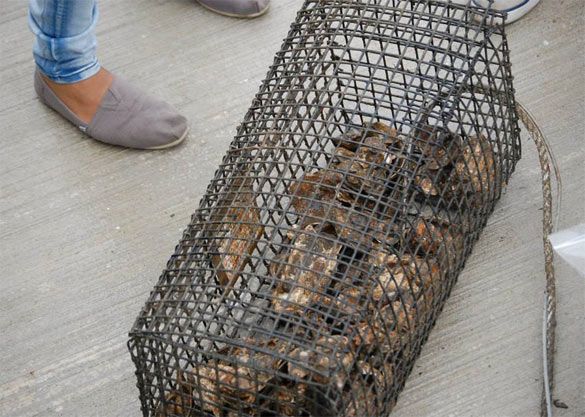John Dewey High School Students Help Revive Gravesend Bay’s Oyster Beds


The waters around New York City were once home to a thriving population of oysters, which served an important ecological role. After virtually disappearing in the 20th century, several efforts are underway to bring the species back.
Students of John Dewey High School (50 Avenue X) Marine Science program are on the front-lines of the revitalization effort in Gravesend Bay, monitoring a collection of oyster beds off of the 69th Street Pier in Bay Ridge.
The school teamed up with the Harbor School’s Billion Oyster Project, one of the organizations leading the oyster reef restorations around New York Harbor. Oysters, which work like living water filters, are a vital component to improving the water quality around New York City, and the reefs they form protect the shoreline by weakening waves and provide habitat to other marine life.
They were once abundant in our area, but vanished almost completely in the early 20th century as pollution, over-harvesting, disease and environmental hazards grew. New York City was developing, and as the population boomed so did the amount of sewage.

Thanks to new regulations implemented in the late 20th Century, water quality has seen a dramatic improvement and researchers are finding that the area can once again support the oysters, which were not just an environmental helper, but a staple of the New York City economy as it developed.
Restoration efforts began on a sizable scale back in 2009. As their initial pilot sites showed signs of success, organizations backing them began finding new sources of funding to grow the project – ultimately creating the goal of bringing one billion oysters back to the harbor over the next 20 years.
The team of Dewey students were on-site in Bay Ridge last Wednesday, pulling in cages and doing their regular checkups. Their teacher, Lane Rosen, said it’s a great way to teach them about marine biology and ecology in a living laboratory in a hands-on way.
The cages are moored to the eco-dock attached to the pier, and students collect data on growth and development of the oysters, analyze the water and make observations that are sent to the Harbor School for further analysis.
We look forward to the point when the reefs are not only self-sustaining, but able to be harvested (in a population-sensitive way) for fresh, tasty slurping.




